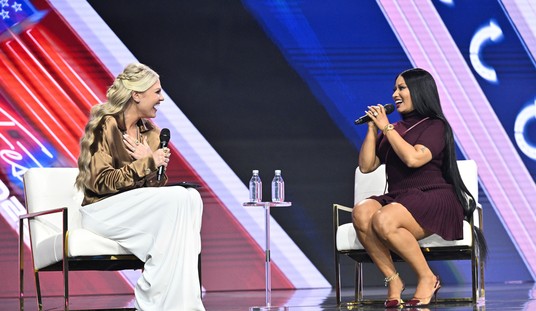Not good news at all, and it’s getting worse the closer it gets to the election. Any rally effect in the COVID-19 crisis has long since disappeared for Donald Trump, and opposition to his approach on the pandemic has hit new highs in the latest ABC/Washington Post poll. In mid-March, Trump held a narrowly positive rating (51/45) on handling the coronavirus, but four months later, he’s now at a dismal 38/60 — and 52% “strongly disapprove” of his efforts:
The Post-ABC poll shows 38 percent of Americans approve of his handling of the outbreak, down from 46 percent in May and 51 percent in March. Sixty percent disapprove, up from 53 percent in May and 45 percent in March.
More than half of the public — 52 percent — now disapproves “strongly” of Trump’s handling of the outbreak, roughly double the percentage who say they strongly approve of his efforts and an increase from 36 percent in strong disapproval since March.
On one hand, one could question whether this is just a function of pandemic fatigue. The consequences of the COVID-19 outbreak are hard on everyone and would tend to make everyone miserable, let alone the other issues plaguing us at the moment, pardon the pun. That would tend to get directed at current leadership regardless of how they perform their jobs. However, since neither leadership nor the pandemic will change much and Trump’s in charge, that’s really just an academic point. People are unhappy, and woe betide incumbents no matter how just that might be.
There are reasons, though, to see this as more specifically an issue with Trump. Part of the problem appears to be that the White House has not convinced Americans yet that the economy is now the bigger crisis. In fact, they have actually lost ground on that point, and Trump’s focus on economic reopening over COVID containment might be exacerbating this trend:
A 63 percent majority say it is more important to try to control the spread of the virus even if it hurts the economy, up from 57 percent in May. The share who “strongly” favor controlling the virus’s spread over restarting the economy has grown from 41 percent in May to 52 percent in the latest survey.
On the subject of masks, nearly 8 in 10 Americans say they are wearing one most or all of the time when they come close to others in public. Trump wore a mask for the first time in public last week after months in which he showed reluctance to follow the recommendations of public health officials. Even after that display at a military hospital, however, he publicly contended the use of masks should not be mandatory.
Those who dislike this particular poll series might complain that it doesn’t represent the overall trend. A quick look at the RealClearPolitics aggregate of Trump’s overall approval ratings easily rebuts that argument. Trump’s approval rating trends are downright catastrophic with less than four months to go before an election:

Trump’s overall approval looked fairly steady and not bad on a historical basis until mid-May. What happened then? Trump started pushing hard for reopening, and cases of COVID-19 started rising shortly after that. Also, though, the killing of George Floyd touched off riots and Trump began defending the Confederate flag, so there’s more mixed up into this collapse of overall approval rating, although the COVID-19 crisis is definitely a big part of it.
The White House should be most worried about Trump’s standing with suburban voters in this survey today. That is where Trump needs to win in order to get a second term, and it looks very bad for him at the moment on COVID-19. Overall approval among suburban voters on that issue is at 39/59, with 53% strongly disapproving. Overall trust on Trump’s credibility on the pandemic is even worse — 35/64 among suburban voters. (Worth noting: it’s not great with rural voters either, 44/53.)
Regionally, the news is just as bad. Trump’s approval rating in the South on handling COVID-19 us 44/55, and trust is down to 38/60. His ratings in the Midwest are even worse — 39/59 on approval, 33/65 on trust. Granted, this is among all adults rather than registered voters or likely voters, so it’s somewhat less predictive in terms of electoral impact. However, with numbers like these, those mitigations are only incremental.
Perhaps other polling will emerge that will contradict this. The trends look pretty clear at the moment, however, and it spells disaster for Trump unless he can turn things around. Paying more attention to the fears of voters on COVID-19 might be a start, and maybe in a more general sense, Trump can end his fascination with the Confederacy until after the election. That isn’t doing him any good, not even in the South.








